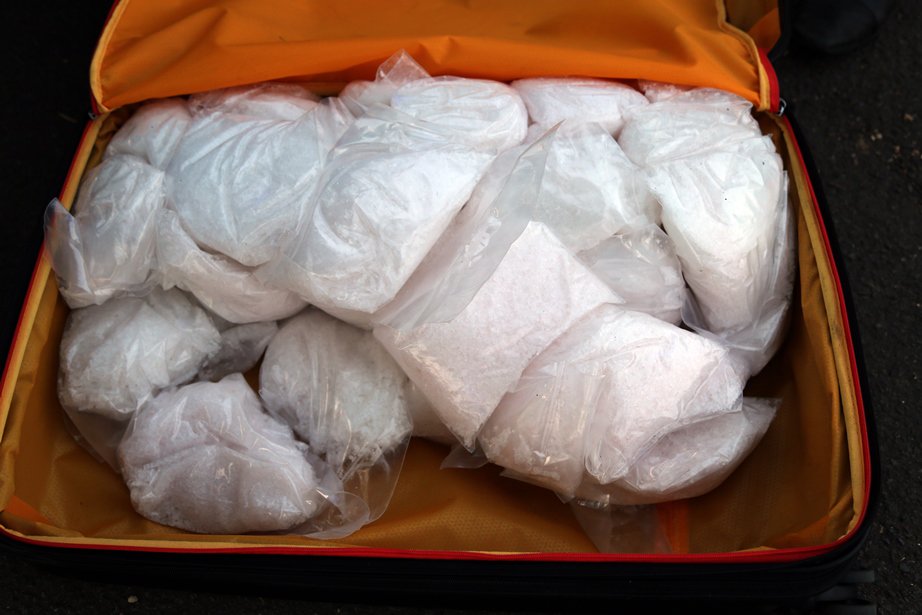
On last week’s International Day against Drug Abuse and Illicit Trafficking, most nations took the opportunity to reaffirm their commitment to an international society free of illegal drugs.
Police from London to Washington, Canberra to Bangkok, and Dubai to Djibouti have been putting this commitment into practice by seizing more drugs and ‘banging up’ more crooks than ever before. However, my fieldwork continues to reveal an intensifying groundswell of awareness in the global police community that, despite these successes, little progress is being made in reducing the supply.
While it’s great to see police leaders starting to acknowledge that we’re not going to arrest our way out of the illicit drug problem, they’re not opening up to the idea that the high rate of seizures is masking the failure of their law enforcement strategies.
Last month, Thai authorities seized 10 million made-in-Myanmar methamphetamine pills and nearly half a tonne of crystal methamphetamine hidden in packages of tea. But if the authorities are honest with themselves, they’ll realise that this seizure is unlikely to result in any change in the availability or price of illicit drugs in the region. The massive volume of production of illicit drugs in mega-laboratories in China, Myanmar and Mexico ensures that the drugs seized in these police operations are seamlessly replaced with little or no change in availability to users.
Last week, a Sydney-based criminal syndicate was arrested for attempting to import 300 kilograms of cocaine into Australia with an estimated street value of $105 million. In 2017, the syndicate had tried to do the same, but their drugs didn’t arrive. Police suspect that they were ripped off by other criminals. The most alarming thing about this is the fact that the syndicate lost 300 kilograms of cocaine but was able to continue to operate as a going concern.
With a global surplus of illicit drugs like cocaine, heroin and synthetics, prices at the wholesale level are low. Conceivably, it’s a buyers’ market. While law enforcement valued this latest seizure of cocaine at $350,000 a kilogram, the criminals involved could have purchased the drugs in South America for $4,000 to $9,000 a kilogram.
The ramifications are clear. Intercepting large shipments of illicit drugs may no longer force syndicates out of business. From Thailand to Australia, new drug seizure records are being set every couple of months. It seems unlikely that increasing the overall weight of drugs seized, or the number of individual seizures, will have an impact on supply. Losing large quantities of drugs to law enforcement is regarded as part of the cost of doing business by today’s transnational criminals.
Custodial sentences, or even capital punishment, don’t seem to be shaping future criminal behaviour in terms of discouraging participation. There are plenty of would-be wholesalers, facilitators, shore parties (small teams sent into Australia by syndicates in advance of an importation to rent facilities and set up distribution hubs), and street dealers willing to quickly fill the vacancies in networks created by arrests.
Since the fall of the infamous Chicago gangster Al Capone, police have been convinced that removing a major organised crime gang’s leadership will disrupt its criminal activity. The death of Medellin Cartel leader Pablo Escobar in 1993 and the arrest of Sinaloa Cartel leader Joaquín ‘El Chapo’ Guzmán in 2017 show that removing leaders may not stop the dispersal of drugs. Both of these experiences resulted in the fragmentation of large cartels but had limited long-term effects on the illicit drug supply. Even with such leaders removed, the low barriers for market entry in terms of capital and expertise, coupled with the high profits on offer, ensure a steady supply of market participants.
While I personally support the decriminalisation of the use of drugs by addicts, and the possession of these drugs for personal use, that too will not resolve the organised crime challenge. It will, however, help relieve the pressure on criminal justice systems from prosecutions of minor drug possession offences. The legalisation of marijuana in some US states has shown that decriminalisation will not necessarily disrupt the activities of organised crime. These groups just find new ways to profit from decriminalisation.
The establishment of the office of the Commonwealth Transnational, Serious and Organised Crime Coordinator creates an opportunity to update Australia’s organised crime response plan and national drug strategy. AFP Deputy Commissioner Karl Kent, who has been appointed to this position, needs to consider whether our law enforcement capabilities are fit for purpose. Key to this process should be an expanded focus on enhancing Australian efforts to reduce the availability of illicit drug precursors—especially in China and Myanmar. This innovation cannot come at the cost of reduced responsive law enforcement operations in Australia, lest this be interpreted by organised crime as the nation being open for business.
The Minister for Home Affairs should also consider establishing an independent organised crime and illicit drug advisory committee. The committee, chaired by the Home Affairs secretary, should have a broad membership with representatives from academia, marketing, medicine, education and industry. The key focus of this group should be the development of innovative ideas on disrupting the supply of illicit drugs, as an alternative to the law enforcement focus.

